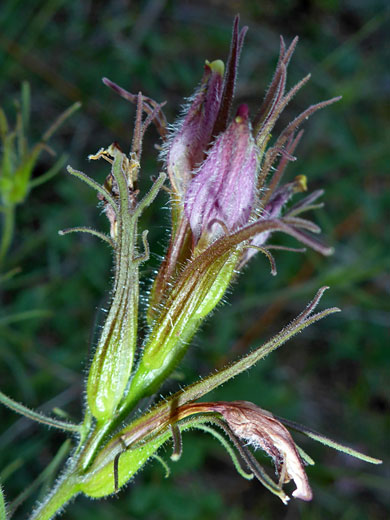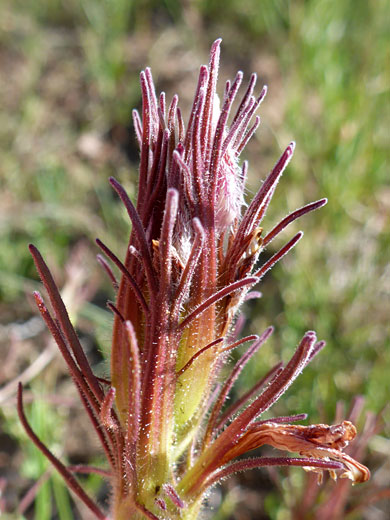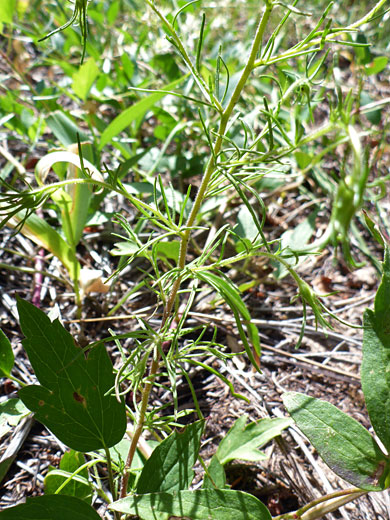Cordylanthus Kingii, Heller's Bird's Beak
Plants > Wildflowers > Orobanchaceae > Cordylanthus Kingii

Heller's bird's beak (cordylanthus kingii), Rattlesnake Creek Trail, Cedar Breaks National Monument, Utah
Common name:
Heller's bird's beak
Family:
Scientific name:
Cordylanthus kingii
Main flower color:
Range:
East California, Nevada, Utah and north Arizona
Height:
Up to 2 feet
Habitat:
Meadows, sagebrush, open woodland, from 4,500 to 9,000 feet
Leaves:
Divided into narrow, linear lobes up to 1 inch long
Season:
June to September
Cordylanthus kingii has a scattered distribution from east California (east of the Sierra Nevada) to far east Utah, extending to the Kaibab Plateau of northern Arizona. Stems, leaves and bracts are moderately to densely covered by spreading, glandular hairs. Leaves are divided into very narrow, linear, well-separated lobes. Leaves may be tinged reddish purple, while the upper stem bracts are more generally purple.
Bracts are divided into three or five narrow lobes, lanceolate to linear, all approximately equal in width; the outer lobes are divided more deeply. Flowers are similar in length to the bracts; they contain four stamens with hairy filaments and two-lobed anthers. The two-lipped corolla is up to 1.2 inches long, yellow to pink or reddish-purple in color, with a dense covering of white hairs.
Two varieties are var helleri of California and Nevada, characterised by dense pubescence and relatively short, more lanceolate bract divisions, and var kingii of Nevada and Utah; this has longer, thread-like bract lobes and a sparser covering of hairs.
Bracts are divided into three or five narrow lobes, lanceolate to linear, all approximately equal in width; the outer lobes are divided more deeply. Flowers are similar in length to the bracts; they contain four stamens with hairy filaments and two-lobed anthers. The two-lipped corolla is up to 1.2 inches long, yellow to pink or reddish-purple in color, with a dense covering of white hairs.
Two varieties are var helleri of California and Nevada, characterised by dense pubescence and relatively short, more lanceolate bract divisions, and var kingii of Nevada and Utah; this has longer, thread-like bract lobes and a sparser covering of hairs.
All Contents © Copyright The American Southwest | Comments and Questions | Contribute | Site Map





